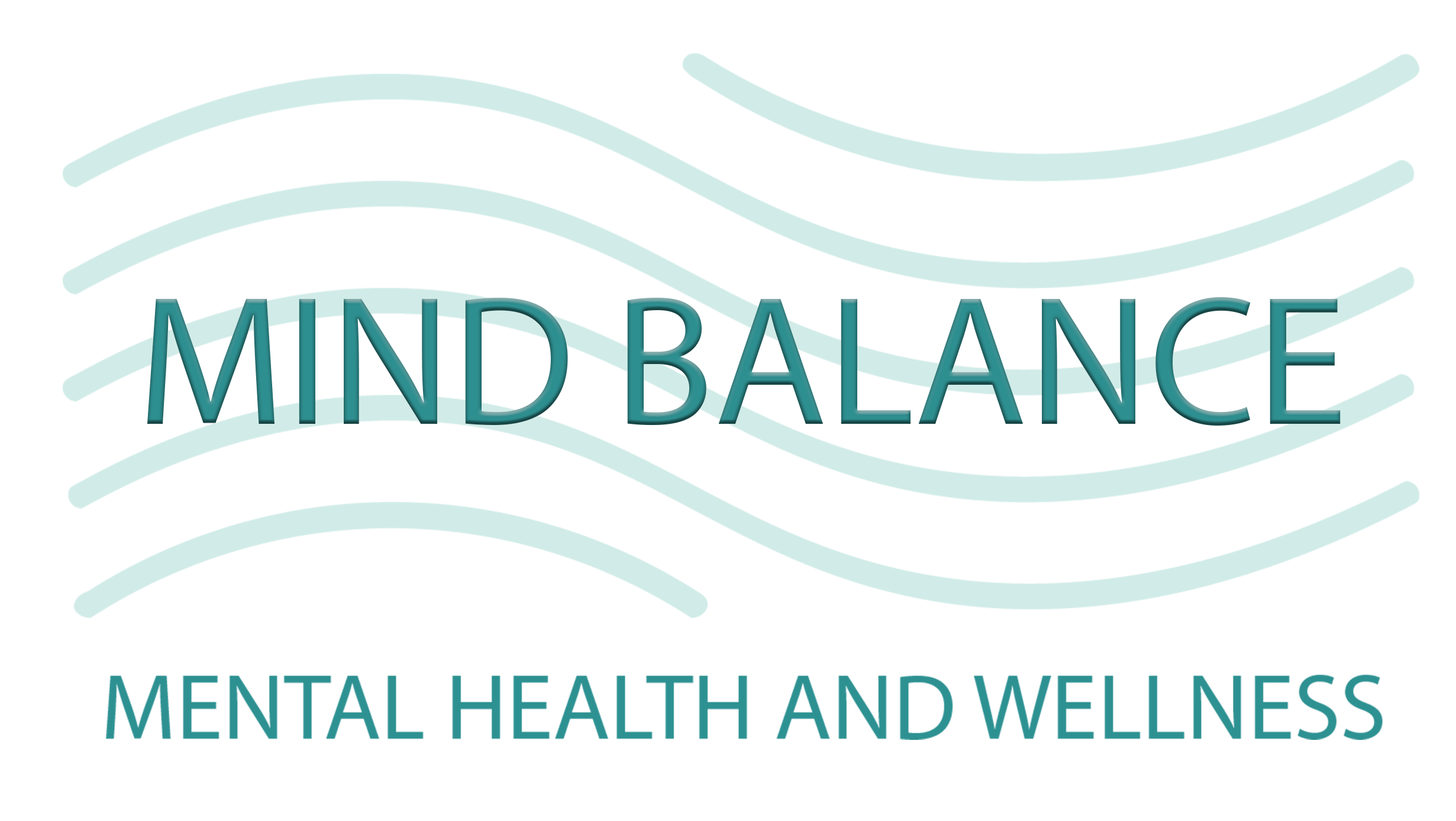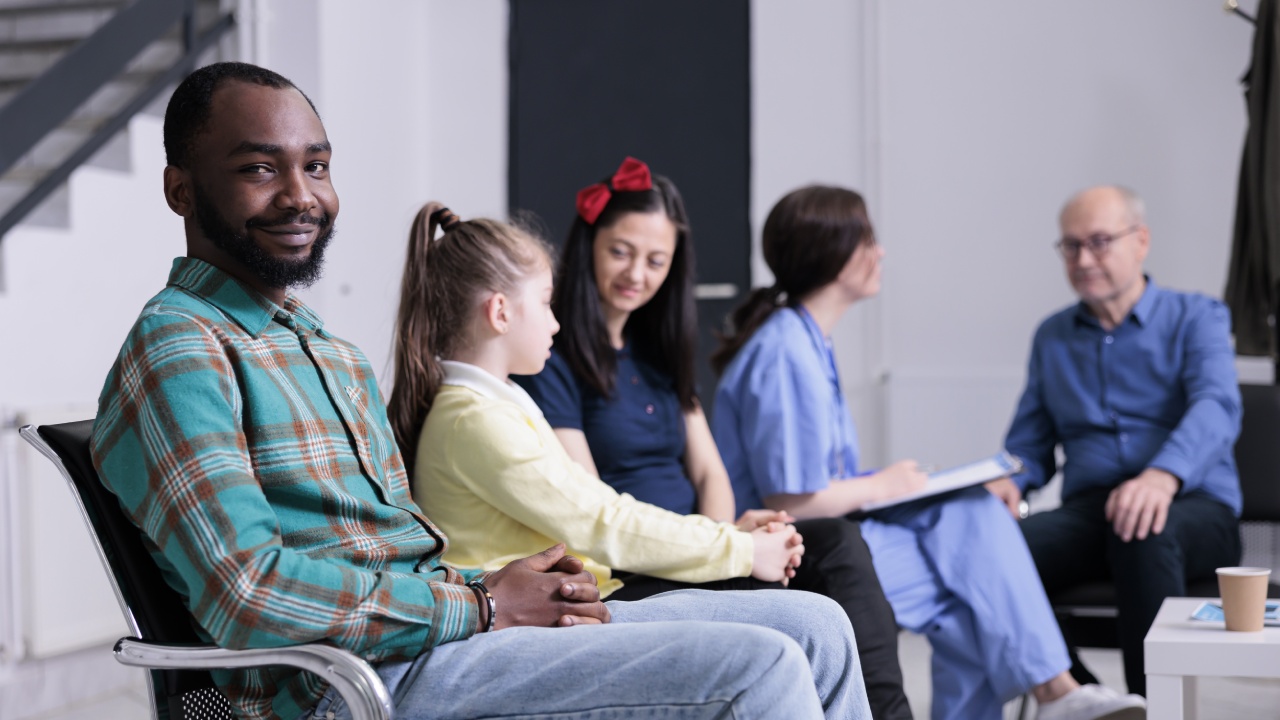Getting a Grip on ADHD Treatment
Taking care of your mental health with Mind Balance in Charlotte, NC, starts with understanding your ADHD treatment options. Tackling ADHD usually means a mix of meds and psychological help, all geared to what you need.
Medication Options
Medications can be a game-changer for ADHD. You’ve got two main types: stimulants and non-stimulants. Stimulants boost brain chemicals like dopamine and norepinephrine, which help with focus. Non-stimulants are there if stimulants don’t work or cause issues. Sometimes, antidepressants are thrown into the mix, especially if mood disorders are also in play. Here’s a quick rundown:
| Medication Type | What It Does |
|---|---|
| Stimulants | Boost dopamine and norepinephrine |
| Non-Stimulants | Different approach, same goal |
| Antidepressants | Handy when ADHD and mood disorders team up |
Want the nitty-gritty on these meds? Check out WebMD‘s medication chart.
Psychological Interventions
Psychological help is another piece of the puzzle. Think cognitive training, neurofeedback, and behavioral interventions. These methods aim to improve behavior, school performance, and brain function. The American Journal of Psychiatry says these can be customized to fit you and often work well with meds.
For kids and teens, the American Academy of Pediatrics suggests parent training in behavior management and classroom interventions. These treatments help with social skills and overall well-being. Get the scoop from the NCBI.
Mixing meds and psychological help can give you a balanced ADHD treatment plan. At Mind Balance, we offer a bunch of behavioral health services like telehealth, teletherapy, and tele-psychiatry to make care easy and accessible. Whether you’re dealing with anxiety, depression, bipolar disorder, or OCD, understanding ADHD treatment is a key step toward a healthier life.
ADHD Medications
Medications can be a game-changer for managing ADHD, helping to improve focus and reduce symptoms. If you’re dealing with ADHD, it’s good to know your medication options.
Stimulant Medications
Stimulants are often the go-to for ADHD treatment. They help balance brain chemicals, improving attention and self-control.
| Medication Type | Duration | Side Effects |
|---|---|---|
| Short-acting Stimulants | 3-4 hours | Less appetite, trouble sleeping, heart rate changes |
| Intermediate/Long-acting Stimulants | Up to 16 hours | Less appetite, trouble sleeping, heart rate changes |
Stimulants work well for about 80% of kids with ADHD, reducing symptoms once the right medication and dose are found (Cleveland Clinic). Long-acting stimulants are often preferred for all-day relief. But watch out for side effects like less appetite, sleep issues, and heart rate changes (WebMD).
Non-Stimulant Medications
If stimulants aren’t your thing or cause too many side effects, non-stimulants are another option.
| Medication | Effect Duration | Onset |
|---|---|---|
| Atomoxetine (Strattera) | Up to 24 hours | Slower onset |
| Viloxazine (Qelbree) | Up to 24 hours | Slower onset |
Non-stimulants like Atomoxetine (Strattera) and Viloxazine (Qelbree) boost norepinephrine levels, helping with attention and impulse control. They take longer to kick in compared to stimulants and aren’t controlled substances, so there’s less risk of abuse (Cleveland Clinic; WebMD).
Antidepressants for ADHD
Antidepressants aren’t typically for ADHD but can be useful, especially if you also have depression or anxiety.
| Antidepressant | Use | Additional Benefit |
|---|---|---|
| Bupropion (Wellbutrin) | Off-label for ADHD | Helps with depression |
| Tricyclic Antidepressants | Off-label for ADHD | Helps with anxiety |
Though not FDA-approved for ADHD, antidepressants can affect dopamine and norepinephrine levels, which might help with ADHD symptoms. They can be used alone or with stimulants to tackle other conditions (Cleveland Clinic; WebMD).
It’s important to talk to healthcare providers who know their stuff about mental health services to find the best treatment for your ADHD. This might include psychosocial treatments, telehealth options, or a mix of medications. Regular check-ins are key to making sure your treatment works and managing any side effects. If you’re also dealing with anxiety, depression, or bipolar disorder, make sure to include these in your treatment plan.
Side Effects and Monitoring
Treating ADHD with medication can work wonders for managing symptoms, but it might come with some side effects. Keeping tabs on these side effects and staying in touch with your doctor is key to getting the best results from your treatment.
Common Side Effects
Starting ADHD meds? You might feel a bit off at first. Side effects can vary depending on what you’re taking, but here are some usual suspects:
- Loss of appetite
- Trouble sleeping
- Feeling jittery
- Irritability
- Mood swings
- Headaches
- Stomachaches
- Faster heart rate
- Higher blood pressure
These side effects often pop up in the first few days or after a dosage bump and might fade over time. Stimulant meds, often used for ADHD, can mess with your appetite, sleep, and heart (WebMD). Non-stimulants might take longer to kick in but usually have fewer risks. If side effects stick around, talk to your doctor—they can tweak your treatment or suggest something else.
Follow-up Visits
Regular check-ins with your doctor are super important for managing ADHD. During these visits, your doctor will see how well the meds are working, tweak dosages if needed, and watch for side effects. They’ll also keep an eye on things like:
- Height and weight
- Blood pressure
- Heart rate
These visits are a great time to chat about any worries you have about your meds, how they’re affecting your life, and any side effects. Your healthcare team can also offer extra help, like therapy, parent support, and school support, as part of a well-rounded ADHD treatment plan.
Make sure to go to all your follow-up appointments and keep the lines of communication open with your doctor. This way, you can make sure your ADHD treatment is safe and effective. Managing ADHD often means combining meds, therapy, and lifestyle changes.
For more tips on handling ADHD and other conditions, check out our resources on anxiety treatment, depression treatment, and bipolar disorder treatment. Can’t make it to the office? Look into telehealth, teletherapy, and tele-psychiatry services through our mental health services and behavioral health services.
Fresh Ways to Tackle ADHD
If you’re looking for ADHD treatments beyond the usual meds, you’re in luck. There are plenty of alternative methods that folks are buzzing about. These approaches often zero in on diet tweaks, behavior changes, and mind-body practices, aiming to work hand-in-hand with traditional ADHD treatments.
Food Fixes
What you eat can play a big role in managing ADHD. The American Journal of Psychiatry highlights a few strategies like cutting out certain foods, avoiding artificial colors, and adding more good fats to your diet. The idea is that some foods might make ADHD symptoms worse, so figuring out what to eat (or not eat) could help you focus better.
| Type of Diet | What’s Involved |
|---|---|
| Elimination Diets | Ditching foods that might cause allergies |
| No Artificial Colors | Steering clear of fake food dyes |
| Fatty Acid Boost | Eating more healthy fats |
Before you start changing up your diet, chat with a healthcare pro. Nutritionists who know their stuff about ADHD can guide you on how to make these changes work for you. For more on this, check out our mental health services.
Behavior Tweaks
Behavioral therapies are a big deal when it comes to non-medication ADHD treatments. These methods aim to change behavior through things like cognitive training and neurofeedback. Usually, pros in behavioral health services handle these therapies, and they can be customized to fit your needs.
Benefits of behavioral therapies include:
- Better self-control
- Improved social skills
- Enhanced organization
Sticking with behavioral therapies takes dedication. Whether you go to sessions in person or use teletherapy, these methods can make a big difference in managing ADHD.
Mind and Body Moves
Mindfulness and exercise can do wonders for kids and teens with ADHD. Practices like meditation, yoga, and tai chi can reduce stress and boost focus (WebMD). Plus, exercise releases brain chemicals that help with alertness and concentration. Activities that get both your mind and body moving, like martial arts or ice skating, can be especially helpful.
Here are some mind-body practices to consider:
- Meditation: Helps you stay calm and focused.
- Yoga: Combines poses with breathing exercises for mental clarity.
- Tai Chi: A gentle martial art that focuses on slow, deliberate movements.
Finding instructors who know how to work with people with ADHD is key. They can adapt these practices to be more ADHD-friendly. For more on mind-body interventions, check out our resources on tele-psychiatry and outpatient psychiatry.
Mixing these alternative treatments into your ADHD plan might help you feel better and manage your symptoms more effectively. Always talk to your healthcare provider to make sure these options are right for you and to keep track of how well they’re working.
Integrative Approaches
Combining traditional treatments with alternative therapies can offer a well-rounded approach to managing ADHD. Two standout strategies are physical activity and mindfulness practices, both of which have shown promise in easing ADHD symptoms.
Physical Activity
Getting moving isn’t just good for your body; it’s a game-changer for your mind, especially if you’re dealing with ADHD. Studies highlight that moderate to intense exercise can boost brain function by releasing neurotransmitters that enhance alertness and focus. For kids and adults with ADHD, activities that require mental engagement—like martial arts, gymnastics, and dance—can be particularly effective (WebMD).
Outdoor activities might pack an extra punch compared to indoor ones. The US Department of Health and Human Services recommends regular physical activity to improve cognitive functions like memory and attention, which can be especially helpful for those with ADHD.
| Activity Type | Benefits |
|---|---|
| Martial Arts | Sharpens focus and discipline |
| Gymnastics/Ballet | Enhances coordination and concentration |
| Outdoor Activities | Lifts mood and alertness |
Making physical activity a regular part of your routine can be a powerful tool in managing ADHD. Pick activities you enjoy and that fit your lifestyle to make it easier to stick with them.
Mindfulness Practices
Mindfulness practices like meditation, yoga, and tai chi are gaining traction for their potential to ease ADHD symptoms. These practices help you stay present, reducing stress and improving attention. Research shows that mindfulness can lead to positive brain changes in kids and teens with ADHD (WebMD).
Yoga, in particular, blends meditation, breathing exercises, and body postures to promote mental and physical balance. It’s generally safe and can be especially effective when guided by an instructor experienced with ADHD.
Mind-body interventions are a key part of integrative medicine for ADHD, aiming to treat the whole person and improve overall health and wellness (NCBI).
Adding mindfulness practices to your daily routine can complement other ADHD treatments. Whether through a local class or teletherapy options, finding the right mindfulness practice for you is a step toward better managing ADHD.
By adopting an integrative approach that includes both physical activity and mindfulness practices, you can create a comprehensive treatment plan that tackles the many facets of ADHD. Work with healthcare professionals, such as those offering mental health services and behavioral health services, to tailor these interventions to your specific needs and ensure they complement other treatments you may be receiving, like medication or psychosocial treatments.
Long-Term Outcomes
When you’re tackling ADHD, knowing the long-term effects of different treatment options is a game-changer. This info helps you make smart choices about your mental health, something you can do with the help of places like Mind Balance in Charlotte, NC.
Treatment Efficacy
Research shows that without treatment, folks with ADHD often face more challenges in life compared to those without it. But getting treatment can really turn things around, even if it doesn’t make everything perfect. Treatment can make a big difference in managing ADHD and boosting your quality of life (NCBI).
One study found that ADHD symptoms dropped significantly after using methylphenidate (MPH), a common stimulant. Check out the table below to see how symptom and impairment scores improved over three years (Springer).
| Measurement | Baseline Score | 3-Year Follow-Up Score | p-value |
|---|---|---|---|
| Symptom Score | 41.9 | 27.5 | < 0.001 |
| Impairment Score | 41.6 | 35.6 | 0.005 |
Predictors of Treatment Response
Knowing what affects how well treatment works can help you customize your ADHD management plan for better results. Early response to meds like MPH can hint at long-term improvement. For example, a 20% drop in symptoms at 3 weeks and 40% at 12 weeks often means better outcomes after three years (Springer).
Here are some factors that can predict how well treatment will work:
- Gender: Girls might respond differently than boys.
- Age: Younger people might see different results.
- Comorbidities: Other health issues can affect how well treatment works.
- Baseline Symptoms: More severe symptoms at the start can mean tougher outcomes.
- Cognitive Factors: IQ and how parents see their child’s impairment can impact long-term results.
- Environmental Factors: Family struggles can also affect treatment success (Springer).
These points highlight why personalized treatment and regular check-ins are so important. If stimulant meds aren’t your thing, you might want to look into alternative treatments for ADHD like behavioral therapies and mind-body interventions.
Regular follow-ups and tweaking your treatment plan, especially if meds aren’t working right away, are key. This way, you can get the most out of your treatment and set yourself up for long-term success. Access to good mental health services, including telehealth options, can help you manage ADHD more effectively.
Management Tips for ADHD
Dealing with ADHD isn’t a one-size-fits-all situation. It’s about finding what works best for you or your child. The American Academy of Pediatrics (AAP) has some solid advice to help you get the best care possible. Plus, there are some great psychosocial treatments that can make a big difference.
What the American Academy of Pediatrics Says
The AAP updated their advice in 2019, focusing on treatments that fit different age groups. Here’s the lowdown:
- Preschool Kids (4–5 years): Start with parent training in behavior management (PTBM) and/or classroom interventions. Basically, this means learning how to handle your kid’s behavior and help them grow.
- Elementary School Kids (6–11 years): Medications approved by the FDA, along with PTBM and/or classroom interventions. Meds can help with the main ADHD symptoms, while behavior techniques tackle the rest.
- Teens (12–18 years): Medications are the go-to, but adding in behavior training or interventions can really help manage symptoms.
| Age Group | First-line Treatment |
|---|---|
| Preschool (4-5 years) | PTBM and/or Classroom Interventions |
| Elementary (6-11 years) | FDA-approved Meds + PTBM/Behavioral Interventions |
| Teens (12-18 years) | FDA-approved Meds + Training/Behavioral Interventions |
Psychosocial Treatments
Psychosocial treatments are super important, especially for kids and teens. These include behavior management, school-based interventions, peer-based interventions, and therapy. The goal? Better behavior, school performance, social skills, and thinking abilities.
- Behavior Management: Learn techniques like positive reinforcement and routines to manage your child’s behavior.
- Classroom Interventions: Work with teachers to support your child’s learning and focus at school.
- Peer-based Interventions: Help your child improve social skills and make friends.
- Therapy: Cognitive-behavioral therapy (CBT) can help with coping strategies and self-esteem.
Try different psychosocial treatments to see what works best. You can find these through mental health services, behavioral health services, or telehealth options like teletherapy and tele-psychiatry. For more specialized care, check out outpatient psychiatry, which can help with ADHD and other conditions like anxiety, depression, bipolar disorder, or OCD.
Following these tips can really boost how well you or your child manage ADHD, leading to better long-term results and a happier life.
Tackling Comorbidities
Dealing with more than one disorder at a time can make treating ADHD a real headache. But sorting out these extra conditions is key to making life better in the long run.
What Affects Long-Term Outcomes?
Studies show that without help, folks with ADHD often struggle more in life compared to those without it. Getting treatment helps, but it doesn’t always level the playing field. The areas hit hardest include drug use, school performance, bad behavior, social skills, self-esteem, job success, driving safety, healthcare use, and even weight issues (NCBI).
Some things make these long-term struggles worse, like:
- Being female
- Getting diagnosed young
- Having other health issues
- More severe ADHD symptoms at the start
Other factors like lower IQ, tough family situations, and higher levels of parent-reported problems also play a part (Springer).
Spotting these red flags early can help tailor treatments to reduce risks. For instance, adding anxiety treatment, depression treatment, or bipolar disorder treatment might be crucial for those with these extra issues.
Why Regular Check-Ups Matter
To get the best results from treatment and improve long-term outcomes, regular check-ups are a must. This means keeping an eye on how well the treatment is working, especially for those who don’t see much improvement in the first few months. Tweaking the treatment plan, whether it’s changing meds or adding behavioral health services, can make a big difference.
Regular monitoring also helps manage other conditions, like OCD, which might need a combined approach with specific treatments like ocd treatment. Using telehealth, teletherapy, and tele-psychiatry can make these check-ups easier and more consistent.
Follow-up visits are super important too. They let healthcare providers track progress, make necessary changes, and offer support. These visits are a chance to tackle any worries and make sure the treatment fits the patient’s changing needs.
By focusing on regular check-ups and dealing with other health issues, we can really improve the long-term outcomes for those with ADHD. Engaging with comprehensive mental health services and getting consistent, personalized care leads to a healthier life for people dealing with ADHD and its challenges. Contact us if you’re looking for ADHD treatment in Charlotte, NC.





